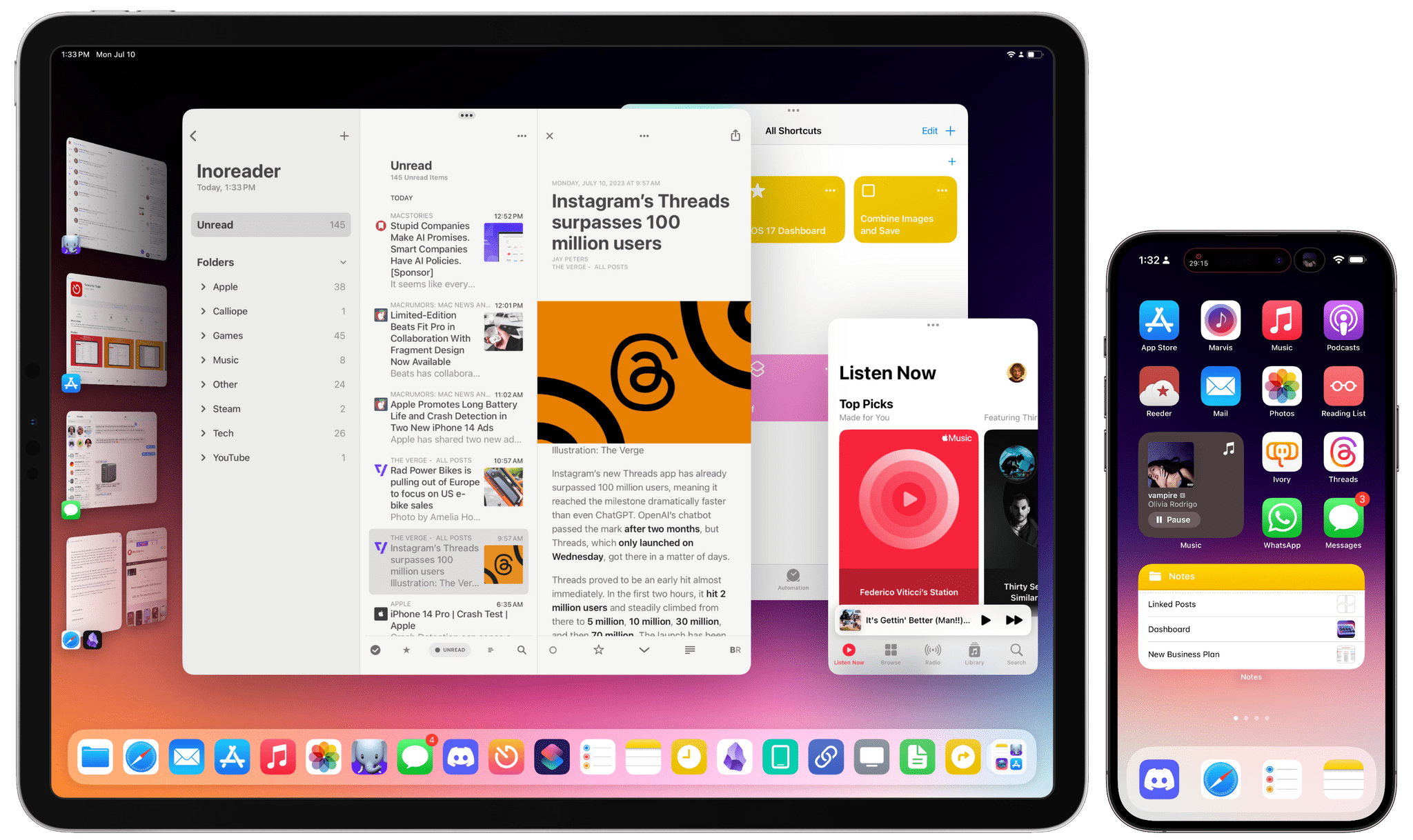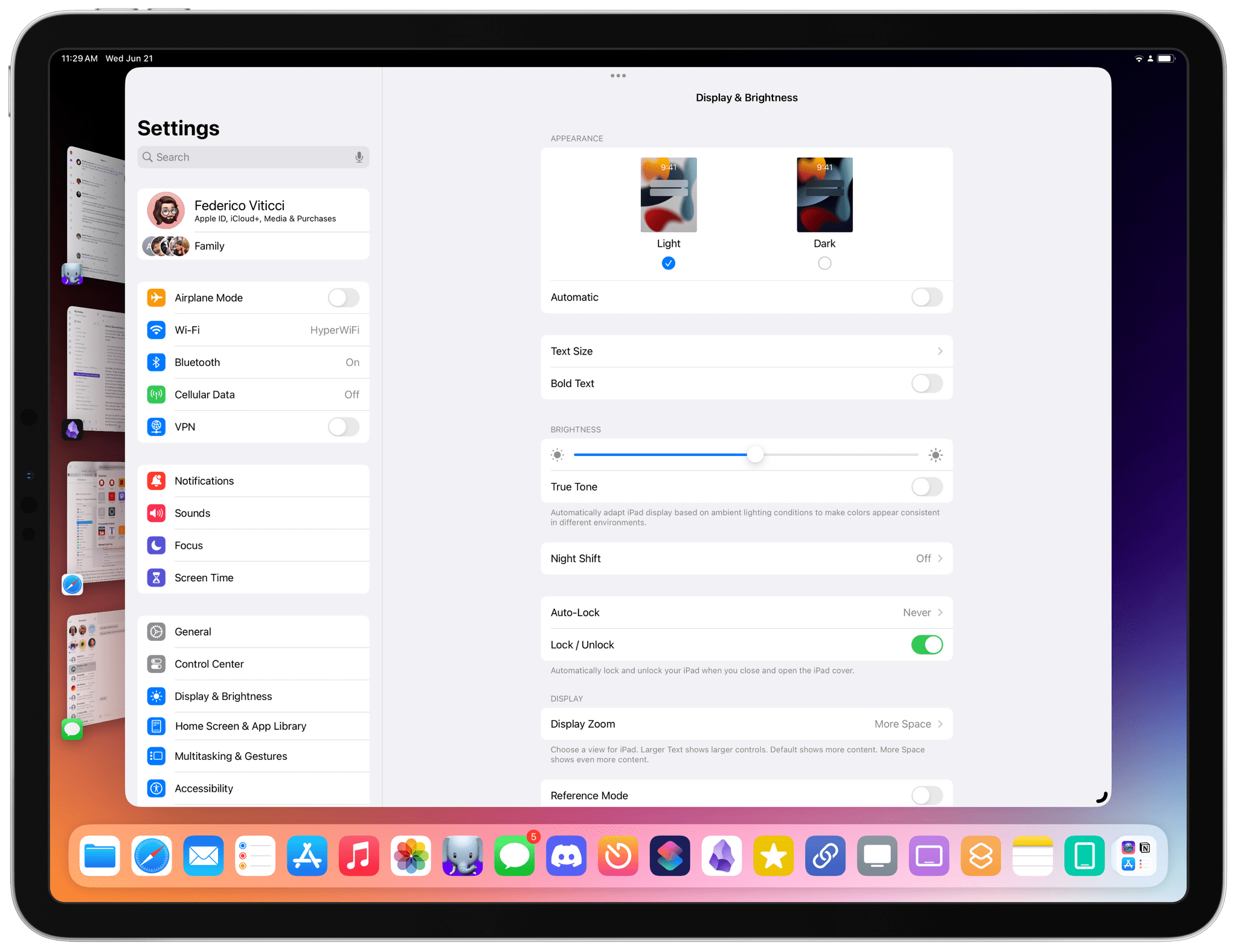As I always do every summer, I read other journalists’ opinions about the new versions of iOS and iPadOS after I’ve published my preview story. This week, as I’m catching up on my reading queue (yes, I’m still using the Reading List/Notes setup I described here), I was pleased to see I’m not the only one who’s liking the new Stage Manager for iPadOS 17. Similarly, I’m not alone in thinking Apple should continue refining the iPad’s multitasking system and catching up with macOS.
Here’s Jason Snell, writing last week at Six Colors:
Unfortunately, one of my most hoped-for features for Stage Manager didn’t make it into iPadOS 17: you can’t run the iPad on an external display with its internal screen shut off, as you can when a MacBook runs in lid-closed mode. Not only can the second screen be distracting, but there’s stuff Apple insists on displaying on the iPad screen, and sometimes apps get thrown over to the iPad screen when you don’t want them there.
I’ve been working with the fake clamshell mode I detailed on MacStories for the past few weeks. It’s doable, but some of the inherent limitations of this workaround are incredibly annoying. For instance: there’s no way to show Control Center on an external display (seriously). I want to believe Apple is working on a real clamshell mode for iPadOS 18.
David Pierce, writing at The Verge, has also some ideas for features still missing from Stage Manager:
But now Apple needs to make Stage Manager an actual iPad feature. It needs to integrate it with the other iPadOS navigational tools and windowing systems in a way that makes sense. Let me have widgets and apps together in a space! And please, please let me save a collection of apps with a name and then bring it up with a Spotlight search, please. It needs to take advantage of the tablet’s outrageous processing power and actually let you use more than four apps at a time. It needs, in short, to make Stage Manager feel like part of the iPad instead of a wholly separate device that just happens to live inside the same screen.
The more I look at macOS Sonoma, the more I wish I could see widgets from my iPad’s Home Screen underneath Stage Manager’s windows. That’s the kind of feature that would make a lot of sense on a bigger iPad Pro.



